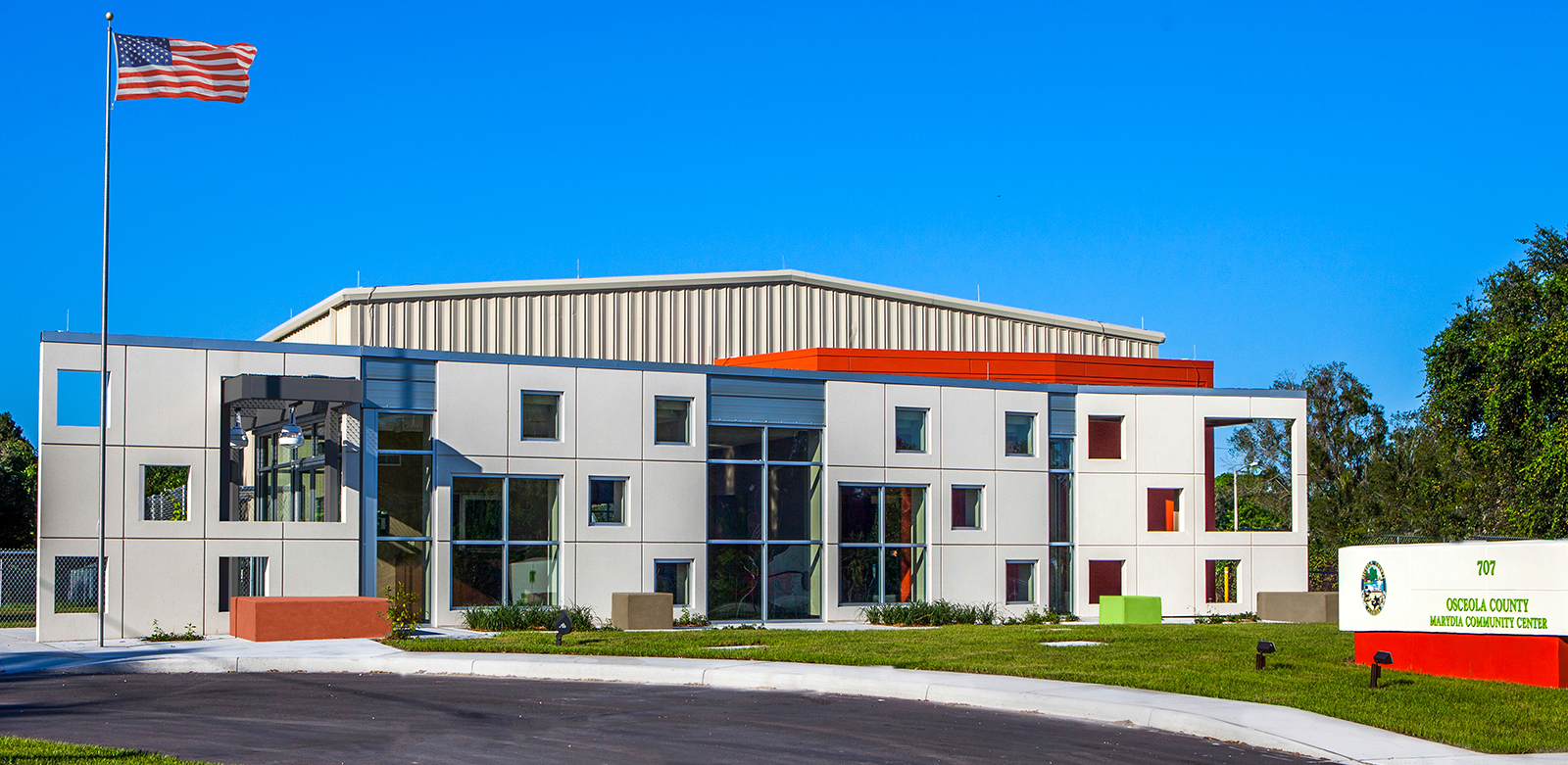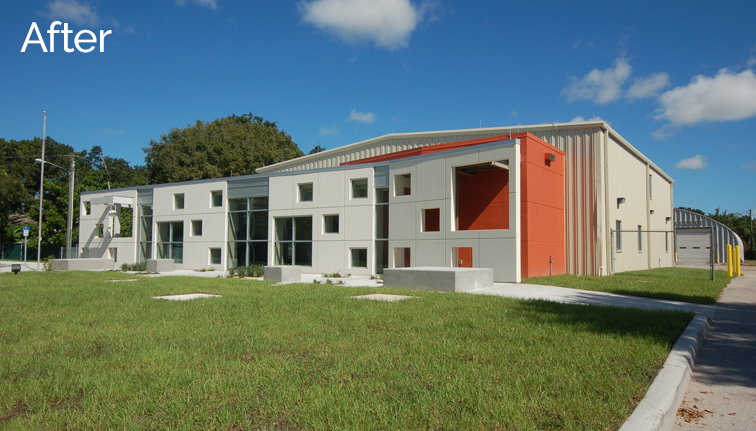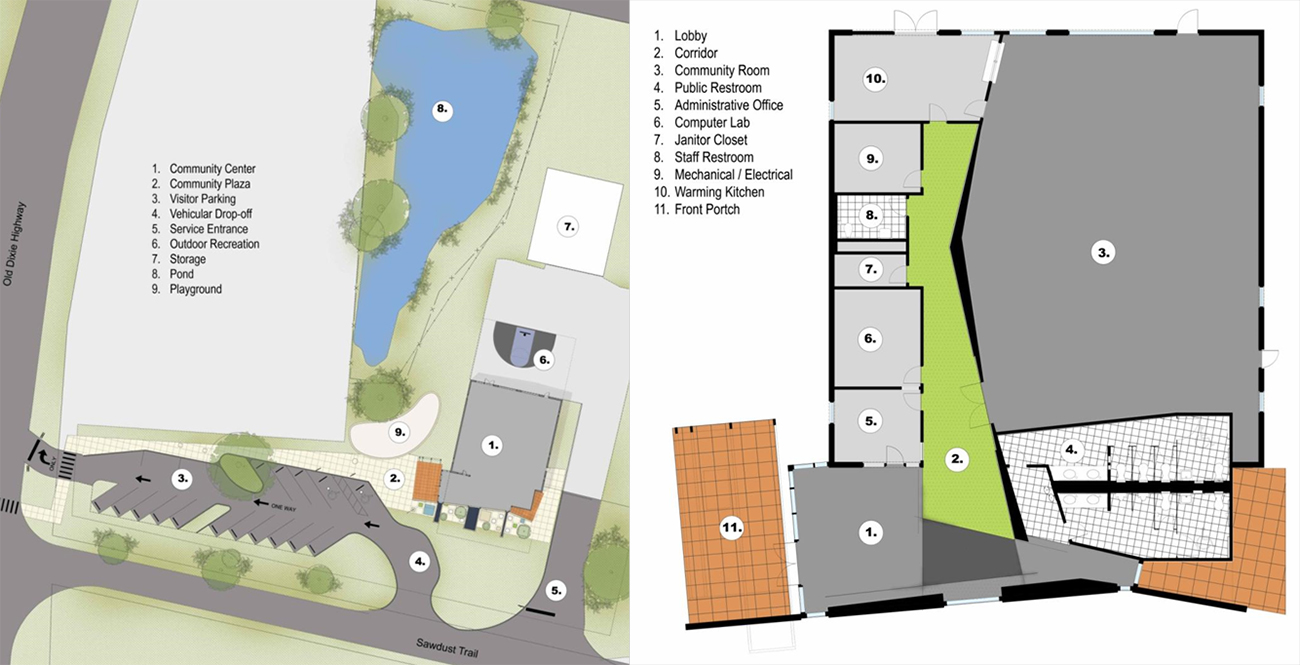
The Marydia Community Center project transformed a fire station into a facility that offers recreational activities and academic programs to an underserved community that has had a history of poverty and gang violence. It included a 1,100 SF addition that houses a lobby, an administrative office, maintenance rooms, a computer lab, and a state-of-the-art kitchen. Residents are able to use the computer lab to interface with government services, to search for employment, or to pursue education or training. Interior remodeling of the existing structure includes a multi-purpose room which can accommodate 320 people, will support children’s programs and can be used for special community events and public meetings. The design was provided by SLAM architects and civil engineers at minimal cost to the County.
![[logo]](https://slamcoll.com/wp-content/themes/sub151-SLAM/resources/images/logo-only.png) at-a-glance
at-a-glanceMarydia is a primarily low-income underserved community bordered by industrial facilities, where gang activity and drugs have been a problem in the past.
The design team sought to help the city of Kissimmee and Osceola County with their goal of creating a facility for the community and a safe place for kids to go before and after school.

When the county decided to erect a community center in Marydia on the site of a former fire and rescue station, the plan called for demolition of the prefabricated structure only to replace it with another generic metal building.

The design team proposed a different strategy: By recycling the existing structure slated for demolition and deploying a new addition as a formal layer fronting the existing building, the resulting combination would make a community center that was bigger and better quality for essentially the same cost.

“Rather than tear it down and build something similar, we knew we could recycle the building and give the community something that was bigger and better for the same cost.”


The existing fire station complex was sited on an L shaped parcel that was predominately pavement which necessitated a retention pond. The new site plan orients the entrance to the new vehicle drop-off area and visitor’s parking area which is nested under and around a historic shade tree. ADA accessible walkways and pavement striping were added to improve access to the Center. The site surrounding the building was enhanced with play structures for visiting children and new fencing to address safety concerns. The plaza and playground frame the new building entrance.

A new sanitary sewer pump station was designed to transition from the existing septic tank system to a future County sanitary sewer system. The pump station was removed after the County’s sewer was built. Civil engineering construction plans and site and stormwater permitting through local and state agencies was provided to address the site changes.

To express the playful form of the community center, the design team secured the cooperation of a neighboring architectural precast concrete manufacturer who donated concrete test panels from its stockpiles and also offered a discount on new panels needed to complete the project.

The simple landscape treatment of softscape and hardscape echoes the geometries of the precast façade. Outside enhancements include a front porch, rear courtyard, seating, and site sculptures that make the facility functional, flexible, and inviting.



2014 AIA Orlando, Merit Design Award Winner

The uses of the building and community room range from weddings and family reunions to tutoring, daycare, meals on wheels, and group learning sessions for children.

2013, Parsons Brinckerhoff America Award Winner, Sustainability/Green Teams